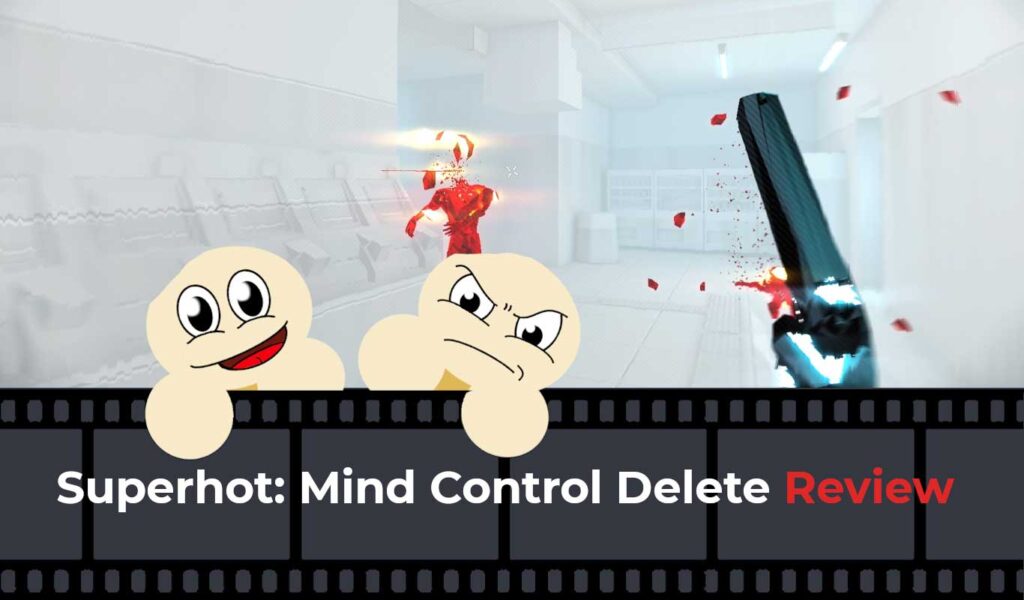

- Superhot mind control delete ending code#
- Superhot mind control delete ending Pc#
- Superhot mind control delete ending series#
If you like the story, you’ll like how it unfolds, and if you don’t, then you won’t have to worry about spending too much time on it. I can see an argument that the story is a bit too vague, but I think their approach supports the overall atmosphere of SUPERHOT: MIND CONTROL DELETE. The story works in the sense that it quite literally makes you ask for more. There aren’t really moments for exposition dumps or lore building, just moments that are almost voyeuristic. The game achieves a solid balance of telling this story while not getting in the way of the gameplay. Speaking of the story, SUPERHOT: MIND CONTROL DELETE picks up the cryptic and vague narrative of the original, and builds upon the initial story by exploring what “more” means in these sometimes eerie moments. From a story perspective, it makes perfect sense, but from a gameplay perspective, it sometimes misses the mark. After going through a bunch of levels in a session, it all starts to melt together. There are little flecks, like the throwable handle on the slot machines in the casino level, but it’s a bit few and far in between. This isn’t inherently wrong, but a lack of contrast certainly blurs things. Now, I think that the style of the game is top-notch, but from a functional perspective, the overly sterile atmosphere gives a certain samey, sanitized feel to everything. This isn’t helped by the minimalist graphics and aesthetics. That being said, the repetition eventually hits a certain level of mundane that detracts from the experience a bit. It’s a great way of progressing things without spiking the difficulty. The game only makes slight alterations to its enemies in each node (weapons, vulnerabilities, aggressiveness). You face the same levels and scenarios multiple times instead of the quick-fail state system of the original. Repetition is honestly how SUPERHOT: MIND CONTROL DELETE builds itself up. This gameplay change smoothes things out, because you’re going to be facing a lot of the same scenarios over and over again. It’s no longer a premeditated walkthrough to solve each level, but more of a “make do with what’s available” approach. With the procedural generation and randomization in selecting nodes and hacks, you now have a game that leans much more into the chance and action side of things.

The original Superhot was not unlike Punch Out! - while it has the veneer of being one genre (FPS), it’s really a puzzle game in disguise. These alterations in the name of “more” have transformed Superhot’s base gameplay-loop experience.
Superhot mind control delete ending code#
These hacks and cores can be anything from increased speed, items exploding on impact, or basically whatever cheat code you can imagine.

The new objective is not to solve the level perfectly with what’s presented, but to adapt to the procedurally generated levels with randomly occurring hacks and cores available.
Superhot mind control delete ending series#
You are now presented with a heart gauge and a series of randomly generated levels to each centralized node. SUPERHOT: MIND CONTROL DELETE adds some rogue-like elements to alter and extend the experience. Whether it’s the gameplay, story, or visual aesthetics, this game pushes for “more,” which is sometimes for the better and, other times, not so much. Fast forward to today, and we have the standalone expansion of the original Superhot, SUPERHOT: MIND CONTROL DELETE.
Superhot mind control delete ending Pc#
The minimalist approach and aesthetic was a real standout in not only the PC world, but also in the emerging VR landscape. Released in 2016, Superhot’s basic principle was similar to a traditional shooter, but eventually paired directly to your movement. Frenetic, fast-paced, and oddly strategic, Superhot as a series reached a unique status with its distinctive take on the FPS genre.


 0 kommentar(er)
0 kommentar(er)
